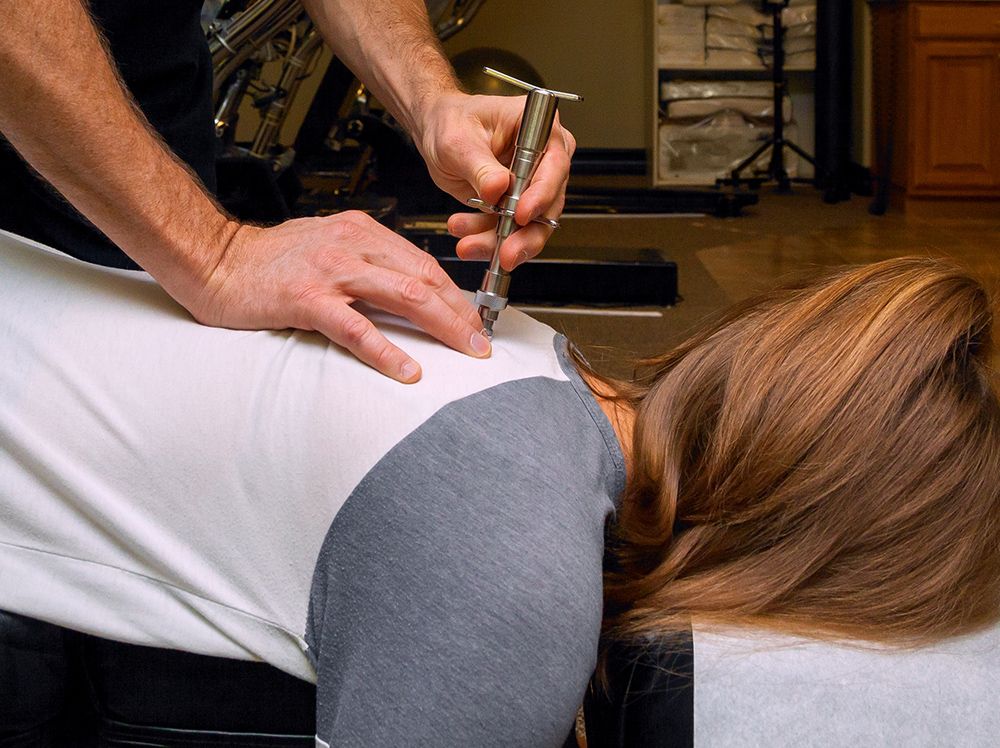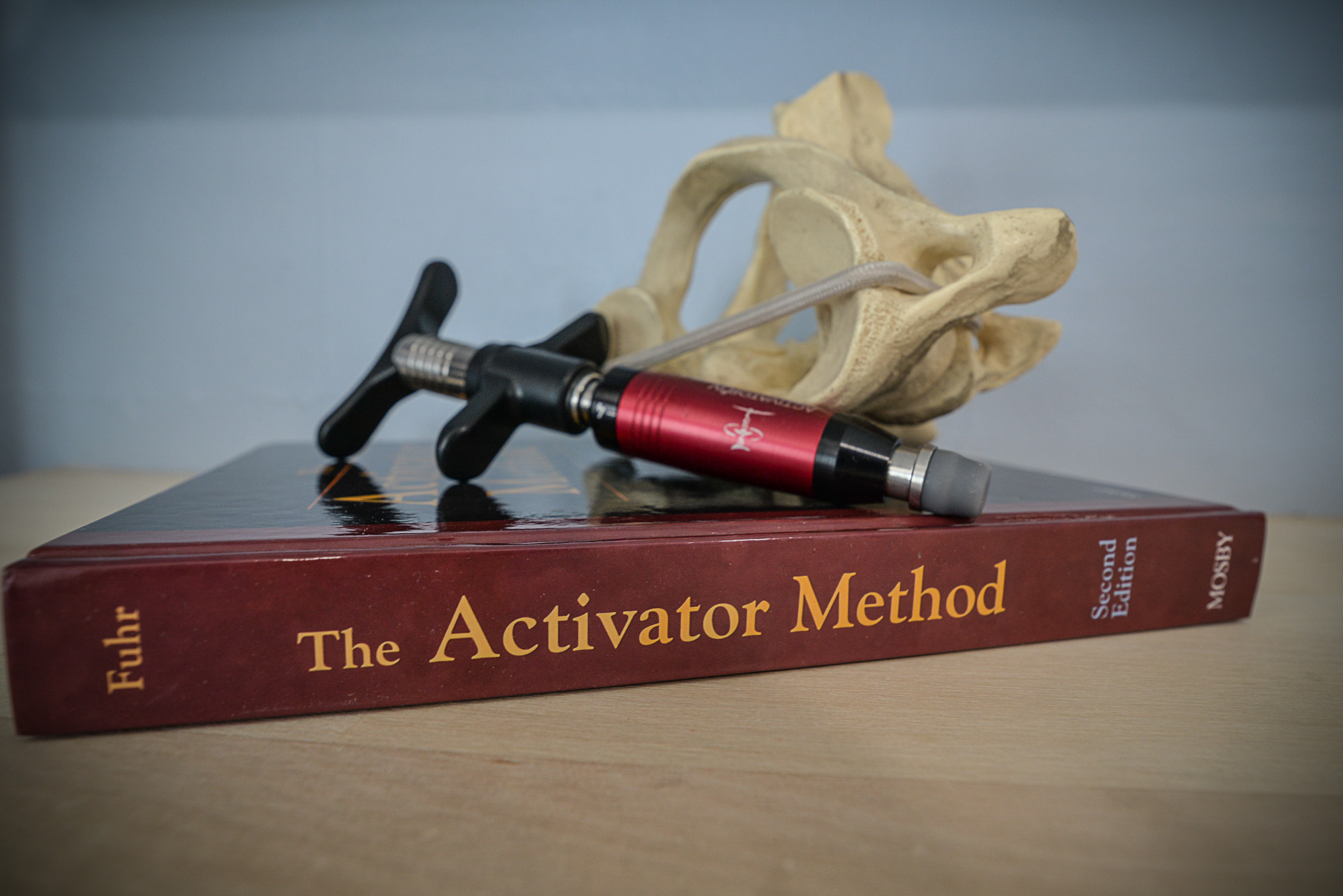In the chiropractic field, the Activator Method refers to a gentle manual manipulation treatment that can be used to treat different kinds of pain complaints in one’s extremities or in the neck or the back. An Activator adjusting instrument is used in this treatment, which is a viable alternative to conventional manipulation methods that use a low amplitude, high-velocity thrust, like the Diversified treatment method.
Certain chiropractors make use of a hand-held, compact instrument known as the Activator Adjusting Instrument, which is used to apply a low-force, quick impulse to the patient’s spinal joints. The targeted joints can enjoy a greater degree of motion, thanks to this method.
The Activator adjusting chiropractic instrument happens to be a widely-used therapeutic intervention used by skilled chiropractors, second only to the Diversified technique. The National Board of Chiropractic Examiners reports that over 50% of chiropractors based out of the USA regularly deploy this method, which is also quite common in New Zealand, Australia, and Canada.

Activator Technique – Chiropractic Treatment Method
The Activator adjusting instrument is a hand-held, spring-loaded mechanical instrument used in the Activator Method. It is used by chiropractors for delivering low-force, quick impulses at various points in the body.
Treatments involving an Activator adjusting instrument offer two advantages:
- Limited force: The amount of force used in the treatment is localized and controlled. It is a gentle method of chiropractic care where the joint is not put in possibly compromised positions like twisting or bending to prevent complications.
- Quick Impulse: Since it’s a fast-acting instrument, the muscles of the body do not tense up as much or offer resistance against the device. The treatment is more effective as muscle resistance is not a factor here.
There are several new Activator adjusting chiropractic instruments that work just like their older counterparts. Instead of relying on a spring-loaded mechanism, the newer models have cordless and electric features.
Evaluation of Leg Length in The Activator Adjusting Method
The Activator Method of Chiropractic can include an evaluation of your leg length. The theory behind this assessment is that leg length differences can help indicate any pelvic and/or spinal misalignments. Keep in mind that this evaluation is not accepted everywhere due to the absence of adequate clinical evidence that supports this approach.
An Activator Method chiropractor may choose not to carry out an evaluation of the apparent differences in leg length. Instead, many chiropractors use conventional physical examination methods like the static and motion palpitation of the spinal region, which can zero in on the location for the application of the Activator adjustment. The Activator adjustment is relatively safe and has no side effects, provided it is carried out by a competent health professional trained to treat neck or back pain issues.
What to Expect?
A general treatment routine involves the patient lying on the chiropractor’s adjustment table face down. The lower back region is targeted first in the treatment, with the focus slowing progressing towards the head, followed by the targeting of various vertebral segments one after the other.
The patient will be evaluated by the chiropractor to detect symptoms and signs that can help identify the various spinal joints or extremities responsible for the pain. The Activator instrument is then used to treat this condition.

How Effective Is the Activator Method?
As a chiropractic procedure, Activator Methods is an effective treatment for a variety of joint conditions. Some chiropractors only use Activators or other instruments in their offices and many of them are extremely successful.
In our office, we use a variety of techniques to treat people who are suffering. Using an Activator may be the only option for someone who does not like “popping” and does not want a manual adjustment. Activator is not typically the first option that Dr. Royer uses but sometimes subtlety is what is needed. Just like to might need a little touch when playing golf or pool, gentle chiropractic adjustments can be just what a patient needs. It is often used in our office to adjust anterior ribs.
While it may not be the first choice, Dr. Royer has used it to help people that manual adjusting has not helped. It is an effective treatment that might be just what you need.
Activator Chiropractic Adjustment
A typical Activator instrument adjustment proceeds this way – the chiropractor first applies this device on the region near or at the affected spinal joint. The provider applies the device using some pressure, which is succeeded by a quick impulse from the Activator instrument, This may feel similar to a reflex test done by tapping one’s knees with a reflex hammer.
Unlike traditional chiropractic adjustments where the patient is made to twist or turn multiple times, the patient can remain still in this procedure. The device makes a clicking sound but there is no popping of the joint.
Activator Adjustment Instrument Research
When compared to the use of high-velocity, low-amplitude manual manipulation (Diversified technique), the benefits of the Activator adjusting instrument were not proven to be better or worse.1
In a low back pain study, 3 treatment methods were compared2:
- Manual-thrust manipulation using high-velocity low amplitude thrust
- Mechanical-assisted manipulation using the Activator instrument
- Usual medical care consisting of over-the-counter analgesic and NSAID medications and advice
At 4-weeks post-treatment, the study found a statistically significant advantage of manual-thrust manipulation for reducing pain and disability compared to either mechanical-assisted manipulation or usual medical care. At 3 and 6 months, however, none of these treatment groups were found superior to the others.
While the Activator Method is a widely researched chiropractic technique, most of the research has been funded by the method’s developer. Additionally, most of the studies were conducted in small groups of patients with a relatively brief follow-up period and lack of control groups. Independent studies with large patient groups are needed to determine efficacy with any significance.
When Is the Activator Method Not Effective?
Just like other spinal mobilization or manipulation treatments, a comprehensive examination must be done first to make sure that the pain of the patient undergoing the Activator adjustment method isn’t due to conditions like:
- Serious neurological disorders
- Open wounds in the targeted treatment area
- Fractures in the targeted treatment area
- Cancer
- Infection
Using the Activator method on such patients could lead to a worsening of symptoms.

Risks of the activator method of Chiropractic
Chiropractors around the world use the Activator Method to treat pain problems in the extremities and back and neck pain issues in the spinal region of their patients. As long as it’s carried out by a licensed professional on a patient who has been adequately examined for other conditions, this method is quite safe to use. A temporary increase in stiffness or discomfort after the first round of treatment is quite common as it’s due to the joints undergoing exercising or thrust manipulation. These symptoms should subside within 24 hours or so.
Since the Activator Chiropractic technique does not involve the leverage of bones to manipulate joints, Dr. Royer considers this technique when patients are very nervous about adjustments.
